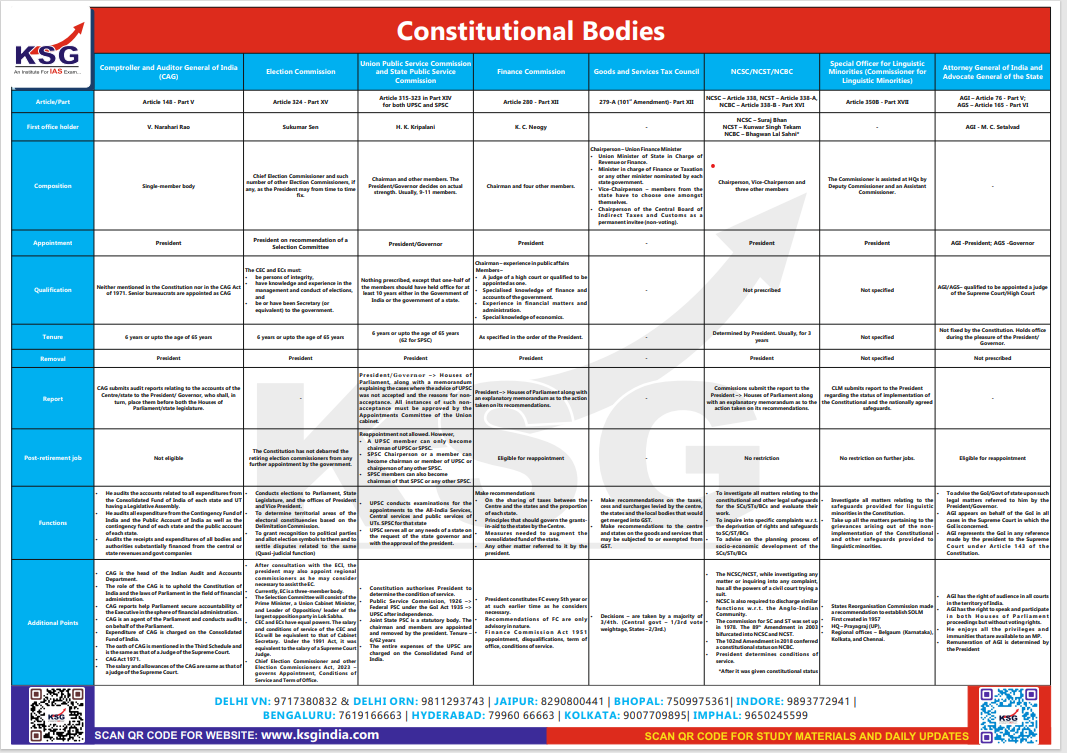GS3- Economy
About
- Definition: The term "Goldilocks economy" refers to an ideal state of the economy characterized by stability, balanced growth, and optimal conditions for businesses and consumers. It symbolizes a perfect state of happiness for all economic participants, drawing its name from the children's story.
- Origins: David Shulman, a senior economist at UCLA Anderson Forecast, may have coined the phrase when he published "The Goldilocks Economy: Keeping the Bears at Bay" in 1992.
- Equilibrium: A Goldilocks economy signifies a state of equilibrium where economic conditions are just right—neither too hot nor too cold. It ensures stable growth, full employment, and controlled inflation, fostering an environment conducive to sustained economic activity and prosperity.
- Transitional Nature: A Goldilocks economy is transitional and cyclical, characterized by periods of expansion and contraction. The boom and bust cycle inherent to capitalist economies necessitate continuous monitoring and intervention by policymakers to maintain stability.
Key Features
- Low Unemployment Rate: The economy maintains a low unemployment rate, indicating ample job opportunities and high labor force participation.
- Asset Price Growth: Prices of various assets, including real estate, bonds, and stocks, experience steady growth, reflecting investor confidence and economic stability.
- Low Interest Rates: Interest rates remain low, encouraging borrowing for investment and consumption, and stimulating economic activity.
- Low Inflation: Both consumer price inflation (CPI) and producer price inflation (PPI) are low, ensuring stable purchasing power for consumers and cost predictability for businesses.
- Moderate Inflation: Inflation, particularly core inflation, rises moderately in a Goldilocks economy. Core inflation excludes volatile components such as food and energy prices, providing a more accurate measure of underlying inflationary pressures. Moderate inflation ensures stable prices without eroding purchasing power or causing disruptions to consumer behavior and business planning.
- Steady GDP Growth: Gross Domestic Product (GDP) experiences steady growth, indicating sustained expansion across all sectors of the economy.
- Ideal GDP Growth: A Goldilocks economy typically maintains a growth rate of 2% to 3% as measured by gross domestic product (GDP) growth. This sustainable expansion avoids both overheating and stagnation, supporting long-term economic health.
Government Role in Sustaining a Goldilocks Economy
- Infrastructure Investment: Incremental government spending on infrastructure projects such as roadways and railways enhances productivity and supports economic growth.
- Public-Private Partnership (PPP): Encouraging PPP models fosters collaboration between the public and private sectors, leveraging resources for sustainable development and efficient service delivery.
- Favorable Tax Policy: Implementing a favorable tax policy incentivizes business investments and stimulates consumer spending through tax cuts, boosting economic activity.
Maintenance of Goldilocks Economy
The concept of a Goldilocks economy intersects with political ideologies and policy decisions, particularly regarding the roles of fiscal and monetary policies.
- Fiscal Policy: Governments utilize fiscal spending on infrastructure projects and tax policies to manage economic conditions. Infrastructure investments and tax cuts stimulate economic activity, while tax hikes can help prevent overheating.
- Monetary Policy: Central banks, such as the Reserve Bank of India, use monetary policy tools like interest rate adjustments to regulate the money supply and stabilize the economy. Lowering interest rates stimulates borrowing and spending, while raising them helps curb inflation.
- Political Disagreements: Disagreements among politicians regarding economic policies can arise, with fiscal conservatives and liberals advocating for contrasting approaches.
- Fiscal policy goals may sometimes conflict to maintain a Goldilocks economy, leading to challenges in policy implementation and coordination.
- RBI's Response: The RBI may adjust its monetary policy to compensate for political challenges or discrepancies in fiscal policy decisions.
- Analysts often observe the Central Bank's actions closely, viewing it as a stabilizing force capable of managing economic conditions independently of fiscal policy.
- Impact of Political Choices: Political choices made regarding fiscal and monetary policies can influence economic outcomes and the likelihood of achieving a Goldilocks economy.
- The ability of policymakers to navigate political pressures and implement effective policies is crucial in maintaining economic stability and growth.
- Focus on the Central Bank: The central bank's role becomes particularly prominent when political goals interfere with fiscal policy's ability to create a Goldilocks economy.
- Analysts and market participants may prioritize the central bank's actions and decisions, recognizing its significance in shaping economic conditions.
Global Influences
The concept of "glocal" influence, which refers to the intersection of global and local factors, plays a significant role in shaping the dynamics of a Goldilocks economy.
- Global Economic Interdependencies
- Economic conditions abroad can influence a nation's ability to achieve a Goldilocks state. Global economic trends, such as trade dynamics, commodity prices, and financial market movements, can affect domestic economic indicators.
- In an interconnected global economy, events in one region can have ripple effects worldwide, impacting factors like inflation, employment, and economic growth.
- International Trade and Investment
- Global trade and investment flows play a crucial role in a nation's economic health. Trade agreements, tariffs, and foreign direct investment can impact domestic production, consumption, and employment levels.
- A Goldilocks economy may benefit from stable global trade relationships and increased international investment, fostering economic growth and stability.
- Monetary Policy Coordination
- Central banks often coordinate monetary policies to manage global economic challenges and maintain financial stability. Collaborative efforts among central banks can help mitigate risks and promote growth.
- International monetary policy decisions, such as interest rate adjustments and currency interventions, can influence domestic economic conditions and contribute to achieving a Goldilocks state.
- Financial Market Integration
- Financial markets are increasingly interconnected, with capital flowing across borders in response to investment opportunities and risk perceptions.
- Global financial market trends, including stock market movements, bond yields, and currency exchange rates, can impact investor sentiment, consumer behavior, and overall economic activity in a Goldilocks economy.
- Global Policy Coordination
- Multilateral institutions and global governance bodies play a role in coordinating policy responses to global challenges, such as financial crises, climate change, and pandemics.
- International cooperation in areas like monetary policy coordination, regulatory standards, and sustainable development initiatives can support economic stability and sustainable growth at both global and local levels.
- Risks and Vulnerabilities
- While glocal influences can contribute to a Goldilocks economy's stability, they also pose risks and vulnerabilities. Economic disruptions, geopolitical tensions, and systemic shocks in one part of the world can spill over and impact other regions.
- Policymakers must consider global economic interdependencies and potential spillover effects when formulating policies to maintain a Goldilocks economy.
Conclusion
A Goldilocks economy represents a balanced and stable economic state, characterized by optimal growth, full employment, and controlled inflation. Achieving and sustaining this equilibrium requires continuous monitoring, intervention, and global coordination to navigate economic cycles effectively.


